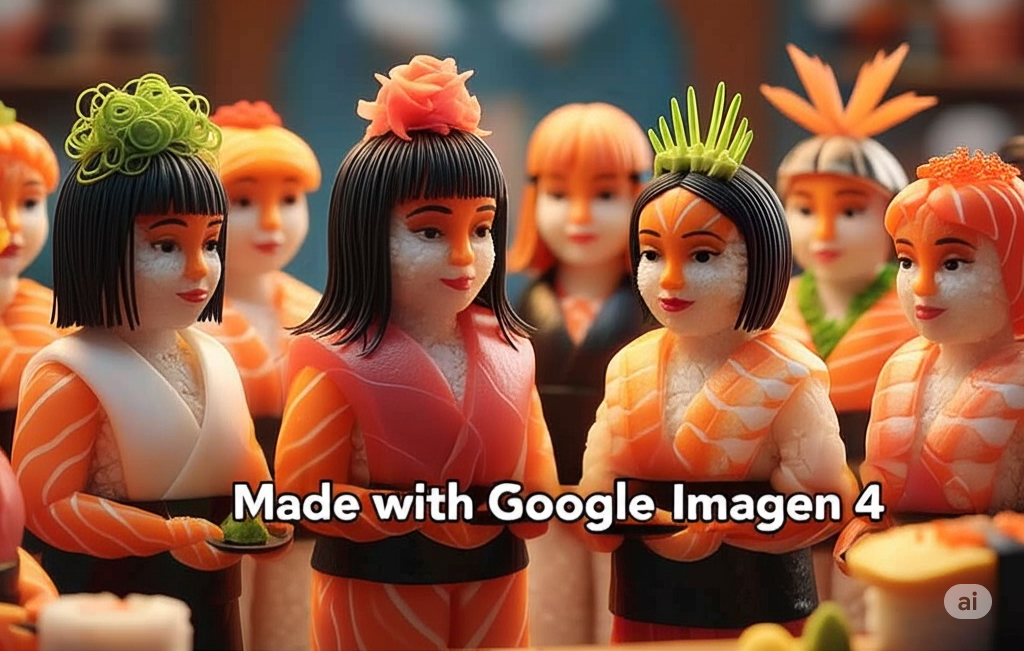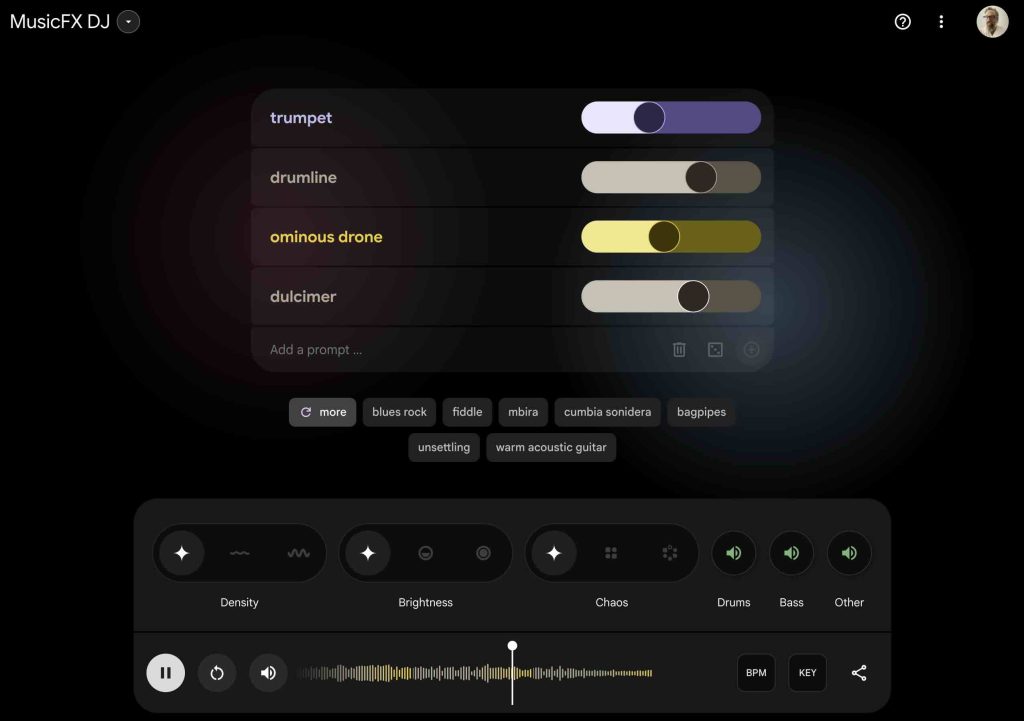Google’s recent I/O 2025 event unveiled a suite of generative AI tools that has the creatives buzzing or freaking out. As the dust settles from their announcement, it’s becoming clear that what we’re witnessing isn’t just another product launch—it’s nothing short of a complete reimagining of the creative process. These new tools represent a fundamental shift in how media is conceptualized, produced, and refined. What once required specialized technical skills, expensive equipment, and teams of professionals can now be accomplished through natural language prompts and AI assistance.
Welcome to the era of “vibe working” – where creators aren’t forcing creativity but discovering it through collaboration with AI tools. Rather than fighting against technology limitations, creators now find their creative “vibes” by treating these generative systems as partners in the process. The result is a more intuitive, exploratory approach to creation that often leads to unexpected and exciting outcomes.
The transformation is happening on two levels simultaneously: democratization and innovation. On one hand, these tools are placing high-end production capabilities into the hands of individual creators regardless of budget or technical background. On the other, they’re enabling entirely new creative workflows and possibilities that simply weren’t feasible using traditional methods.
Most significantly, Google has clearly designed these tools through deep collaboration with professional creators across industries. This isn’t AI developed in isolation, but technology built to solve real creative challenges while respecting the human element of the artistic process.
Google’s new state-of-the-art video generation model, Veo 3, introduces a game-changing capability: synchronized audio generation. Beyond just creating visuals, it now generates appropriate soundscapes—traffic noises in city scenes, birds singing in parks, and even dialogue between characters.
This advancement eliminates one of the biggest friction points in video production. The model shows impressive improvements across text and image prompting, realistic physics, and accurate lip syncing. Most importantly, its comprehension abilities allow you to input a short story as a prompt and get back a fully realized audio-visual narrative.
While Veo 3 pushes boundaries, Google hasn’t abandoned Veo 2. New filmmaker-focused capabilities include:
These features directly address professional workflow pain points, showing Google’s responsiveness to creator feedback.
Flow represents the next evolution—an AI filmmaking tool that seamlessly integrates Google DeepMind’s most advanced models (Veo, Imagen, and Gemini). It allows natural language shot descriptions, centralized management of story elements, and cohesive scene creation.
This shift from isolated tools to integrated environments marks a significant advance in the user experience. Flow simplifies the filmmaking process end-to-end, with major implications for indie creators and small studios.

Google’s latest Imagen model combines speed with precision, creating images with remarkable detail fidelity—from intricate fabrics to water droplets and animal fur. It excels in both photorealistic and abstract styles, supports various aspect ratios up to 2K resolution, and significantly improves typography.
The typography advancement is particularly significant, as poor text handling has limited the usefulness of image generators for marketing materials and text-heavy content. Imagen 4 now makes it practical to create professional greeting cards, posters, and comics with proper text integration.

Google’s approach to music AI represents years of thoughtful development, starting with the Magenta project in 2016. The Music AI Sandbox, powered by their Lyria 2 music generation model, was built through close collaboration with musicians, producers, and songwriters. I don’t have access to the Lyria 2, but there is a example project called MusicFX DJ that looks to use the Lyria 2 models.
The platform offers three transformative capabilities:
These tools position AI as a collaborative partner in the music creation process, expanding creative possibilities while keeping human direction central.
The implications of these tools extend far beyond their immediate capabilities. We’re seeing several significant trends emerge:
Traditional media creation involves distinct phases: conceptualization, pre-production, production, and post-production. These tools are collapsing these stages into a more fluid, iterative process where ideas can be realized and refined almost instantaneously. The distance between imagination and realization is shrinking dramatically.
The value of technical execution skills is being partially displaced by creative direction abilities. We’re moving into an era where articulating your creative vision effectively (through prompts and guidance) becomes more valuable than technical proficiency with traditional tools. This doesn’t eliminate the need for craft, but changes its nature.
Perhaps most revolutionary is the ability to explore creative options at unprecedented speed and scale. Creators can now generate dozens of variations, explore multiple artistic directions, and test different approaches in the time it previously took to produce a single version. This enables creative discovery that simply wasn’t possible before.
This is where “vibe working” truly shines – creators can rapidly iterate through options until they find the perfect “vibe” for their project. The process becomes less about executing a predetermined vision and more about exploration and discovery in partnership with AI. You might start with one idea but discover something far more compelling through this iterative collaboration.
Expect to see the emergence of specialized roles like “AI directors” and “prompt engineers” who excel at orchestrating these tools to achieve specific creative visions. New educational paths and certifications will develop around these skill sets.
The mention of Lyria RealTime points to where this technology is heading—generative AI that responds in real-time to human direction, enabling new forms of live performance and interactive media experiences that blur the line between creation and consumption.
Whether you’re a filmmaker, musician, designer, or content creator, here’s how to approach this technological shift:
Start experimenting with Veo 3 through Google’s Ultra subscription or Flow if you’re focused on narrative creation. The reference-powered video capabilities are particularly worth exploring for maintaining visual consistency across projects.
Imagen 4’s typography improvements make it substantially more useful for commercial work. Test its capabilities with projects that would normally require complex compositing or extensive retouching.
The Music AI Sandbox offers powerful creative possibilities. Consider using the Extend feature to break through creative blocks or explore the Edit tool to reimagine existing compositions in new styles or genres.
Flow represents the most integrated experience, allowing you to combine visual, audio, and narrative elements. This is particularly valuable if you produce content across multiple channels.
Don’t feel pressured to revamp your entire workflow immediately. Begin by identifying specific pain points or creative bottlenecks in your process, then experiment with how these tools might address them. Remember that “vibe working” is about finding a comfortable, intuitive collaboration with these tools – let yourself play and explore rather than forcing specific outcomes. Often the most interesting results come from giving the AI some creative latitude while providing thoughtful direction.
The creative landscape is evolving faster than at any point in history. Google’s latest generative AI tools aren’t just incremental improvements—they represent a fundamental reimagining of the creative process itself. For professionals, these tools won’t replace your expertise but will transform how you apply it. For newcomers, they reduce barriers to entry that have historically kept creative fields exclusive.
This is truly the era of “vibe working” – where the line between human and AI creativity blurs into a collaborative dance. The most successful creators won’t be those who try to bend these tools to traditional workflows, but those who embrace the intuitive, exploratory nature of this new paradigm. It’s about finding the right creative wavelength with your AI tools rather than forcing them into predetermined paths.
We’re just at the beginning of this transformation. The most exciting applications will likely come from creators who approach these tools with both curiosity and intention, seeing AI not as a replacement for human creativity but as a powerful new medium for expressing it.
What do you think? Are you excited about these new tools? Drop your thoughts in the comments!
Anthony Batt has been running an AI-first frontier product for the past year at CO/AI and podcasting Vibe Working. With extensive experience as a technology and product executive, Batt has founded and worked for several venture-backed startups, giving him firsthand insight into the transformative impact of AI on business operations and strategy.